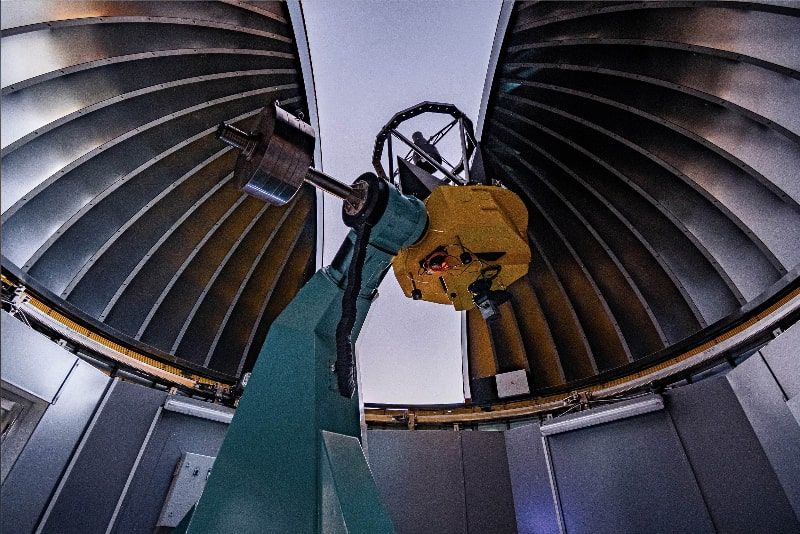UNAM participates in the detection of exoplanet TOI 2257 b
TOI 2257 b, the third planet outside the solar system detected by the robotic equipment installed at the National Astronomical Observatory in Baja California. It is around an M-type star, one of the coolest and smallest in the galaxy; it has a radius 2.2 times that of the Earth.

Researchers from the Institute of Astronomy (IA) of the UNAM participated in an international collaboration that detected an exoplanet (a planet outside the solar system) with the SAINT-EX robotic telescope, which operates from the National Astronomical Observatory of San Pedro Martir (OAN-SPM), in Baja California. This is the third planet detected with this equipment, which operates from one of the most favorable areas of the world for astronomical observation.
It is called TOI 2257 b and is around an M star, which is among the coldest and smallest in the galaxy, said IA researcher and coordinator of the robotic telescope Yilen Gómez Maqueo Chew. "It was first identified with data from the TESS satellite, which is observing the entire sky in search of exoplanets, but its existence was confirmed with telescopes from Earth such as SAINT-EX, to make sure it is a planet and not something else," she said.
Along with Gómez Maqueo Chew, UNAM university researcher Laurence Sabin (from the Ensenada branch of the IA) and postdoctoral academics Marco Gómez Muñoz (in Ensenada) and Emiliano Jofré (in Ciudad Universitaria) cooperated in the discovery. The results of the research are published in the journal Astronomy and Astrophysics. Also researchers from the universities of Bern, Geneva, and the Planets working group; three from Switzerland; the University of Liège, Belgium, and the University of Cambridge, United Kingdom.
The article has 19 collaborators from various parts of the world, such as the Massachusetts Institute of Technology and the University of California, in the United States; the Instituto de Astrofísica de Canarias, Spain; and the National Council for Scientific and Technical Research of Argentina, among others. The scientists elaborated a detailed analysis of the data from the terrestrial satellites and TESS confirming the discovery. "The planet we found is named after the star TOI 2257 and the b means that it is an exoplanet that is orbiting around it."
The celestial body found is relatively large compared to the Earth, being 2.2 times the Earth's radius, and it goes around its star every 35 days, which is not very long in terms of the solar system, but for the exoplanets known around M stars, it is one of the ones that take the longest to go around the star sub-orbiting it.
The SAINT-EX telescope detected the celestial object's light curves, that is, the light received from the star and how its brightness changes as a function of time. As if it were an eclipse, as the exoplanet passes by its star, it darkens it, makes it less bright, and leaves only light curves, which the equipment captures and the astronomers interpret.
While in the solar system there are giant planets such as Jupiter, Saturn, Neptune, and Uranus, which have between four and 11 times the radius of the Earth, this newly discovered exoplanet is 2.2 times the radius of the Earth, which places it in an intermediate phase. It is expected to be more gaseous than a terrestrial planet; and it has an eccentric orbit, which is oval and the exoplanet is sometimes very close and sometimes very far from its star.
In general terms, this exoplanet provides scientists with information on how long it takes to go around, its size, and what its star is like.
It helps us understand the context of planetary systems. Before the first ones were discovered in the 1990s, the only planetary system we knew about was the solar system. Everything we knew was also based on star formation. Once exoplanets are found we realize that they are very different from what we knew, and that helps us to better understand the process of how planetary systems form and how they evolve.
So far, scientists from around the world have discovered more than 4,893 exoplanets, which give a clear idea of what other different planetary systems in the Universe are like. The next mission of the James Webb Space Telescope is expected to reveal the exoplanet's atmosphere, which would provide more knowledge about this discovery.




